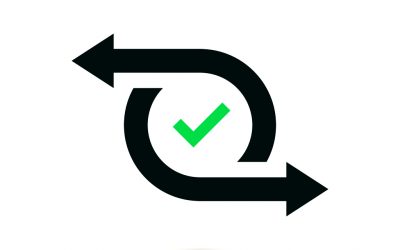Sustainability and eco-friendly are two words that are working their way more and more into brand messaging and business models.
From high street names to designer labels, building a sustainable brand is a very attractive prospect for many businesses. As consumers develop their awareness of the environment and the impact that their purchases have, the more invested they become in brands that promote sustainability.
The market for sustainable goods is growing rapidly as consumer buying preferences begin to shift. Not only is there a preference for eco-friendly products, but consumers are also looking for brands who adopt a sustainable business model that reaches every area of the business. Everything from the resources and raw materials that go into products through to packaging and recycling or reuse of the product is considered.
Business owners are starting to recognise the value in a sustainable business model with many reviewing their entire approach to become more environmentally aware, changing systems or processes, sourcing products from more sustainable sources or launching initiatives in the circular economy.
Start-ups have a huge advantage because they can build a strong business model from the ground up with a specific focus on sustainability.
Building A Sustainable Brand
There are many ways in which a business can build a sustainable brand and there is no right or wrong way to do it. The process requires time, thought and planning to execute successfully but the benefits of doing so are huge for businesses. There are five key areas that can guide you through the process of building a sustainable brand that’s specific to you and the products and services that you sell. As you move through each of the steps, tailor them to your business and formulate your unique messaging and ethos which will help you to stand out.
Step 1. Audience
First and foremost, you need to define your audience. Understanding who you are talking to is essential. The best way to do this is with research. Explore current trends and find out what people are talking about from a sustainability perspective. This analysis will reveal insights into what people value most. Most importantly find out what your audience wants.
Your research and analysis should cover a variety of sources and can combine many different methods such as social media polls and trend analysis, surveys and an evaluation of your competitors, particularly those who place emphasis on being sustainable.
Also, evaluate your existing practices to see how and where adaptations could be made to shape your business into a more sustainable one. Review your supply chain to evaluate what changes your audience would appreciate such as reviewing how deliveries are made, how products are shipped, how your products are sourced and so on.
You can only build a sustainable brand if you know what your audience want and value and there isn’t a one size fits all approach, it will differ from business to business and the niche in which you operate.
Step 2. Brainstorm
With your market research complete and a good understanding of your audience, the next stage in the process is to brainstorm all of the ideas that you have in terms of sustainability.
Take an objective look at your business and explore how you could be more sustainable, what products you could sell, what minor and major changes you could make. Every area of your business should be covered including day to day operations as well as the entire product lifecycle from development to reuse.
How could your products be reused or recycled and how could this be carried out? Consider initiatives such as recommerce, monitor waste and use eco-friendly equipment in your manufacturing processes.
Step 3. Mission Statement
By this stage, you should have a good idea of your customers, systems, processes and products that you will be offering so it’s important to tie all this together with a strong mission statement. Your statement should be something that first and foremost addresses customer concerns in relation to sustainability. This should be relatively easy to put together as the consumer research you did as part of the first step in this process should have given you lots of information to work with.
Build this mission statement around your commitment to the environment and the goals that you want to achieve such as zero carbon operations, 100% recycled packaging, or a specific percentage of your items that are reused at the end of their lifespan.
Step 4. Your Story
If you can build a compelling narrative around your reasons for building a sustainable brand that will relate to consumers, this should be shared. People buy from brands that they can resonate with. You may have an engaging story that showcases your commitment to sustainability, or a success story with an initiative that you tested, or even just your story of who you are and why sustainability matters to you.
The more relatable you become, the more customers will connect with your brand.
Step 5. Strategy
The final stage in the process is to pull everything together and map out your approach to building a better business with a sustainability strategy. This will identify your goals, narrow down your focus, demonstrate your commitment and show how you will get there. Developing your strategy should always be connected to a tangible goal linked to your wider business objectives.
How will you measure the effectiveness of your sustainability efforts and how do they link to other business goals such as new customers?
As with any type of strategy, it’s important that you communicate your core messages to your audience. It should be part of who you are.
Use social media to promote how your business is sustainable, use logos and stickers on your packaging to demonstrate to customers that you are taking all of the necessary steps to be as sustainable as you can. If you offer things such as recycling of products or buy-back schemes, promote these with customer orders and keep reminding customers about them through email communications if they opt in or other marketing communications.
The goal is to create a brand that is synonymous with sustainability and one that stands out from all the other brands. Find something that you do better than anyone else, such as recommerce or reusing packaging and position it in a unique way and you will be able to differentiate your business and attract new customers.
PS, Are returns & overstock damaging your business? If you are ready to join the reCommerce revolution with a sustainable selling solution then contact ClearCycle today.




